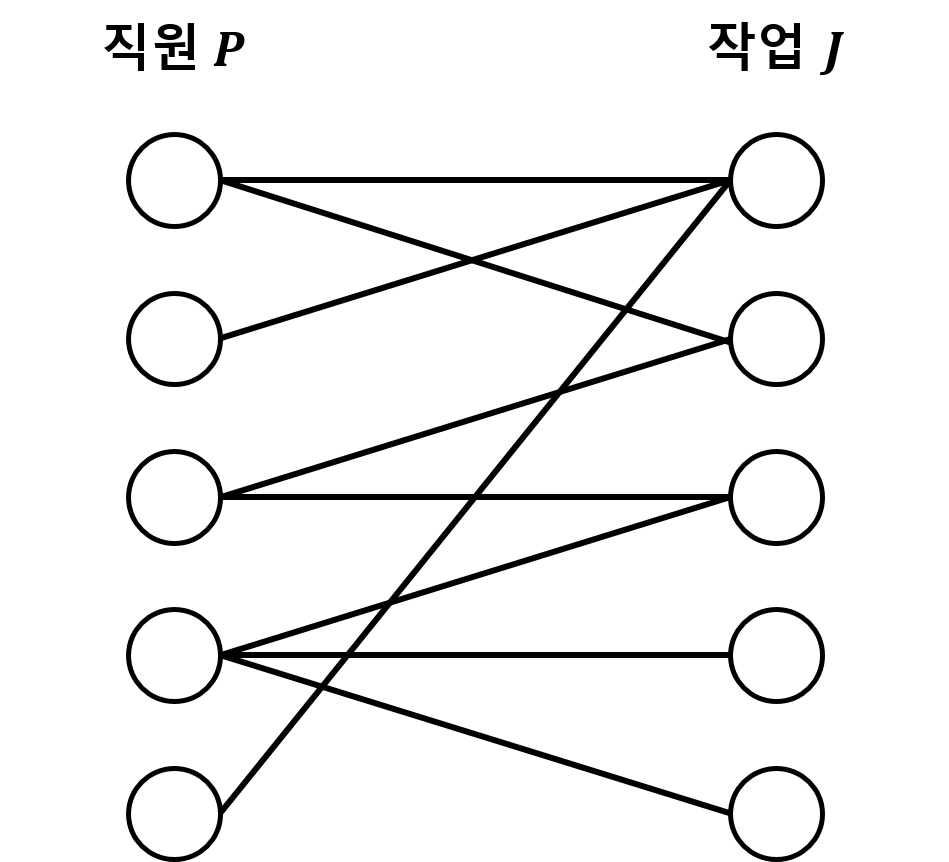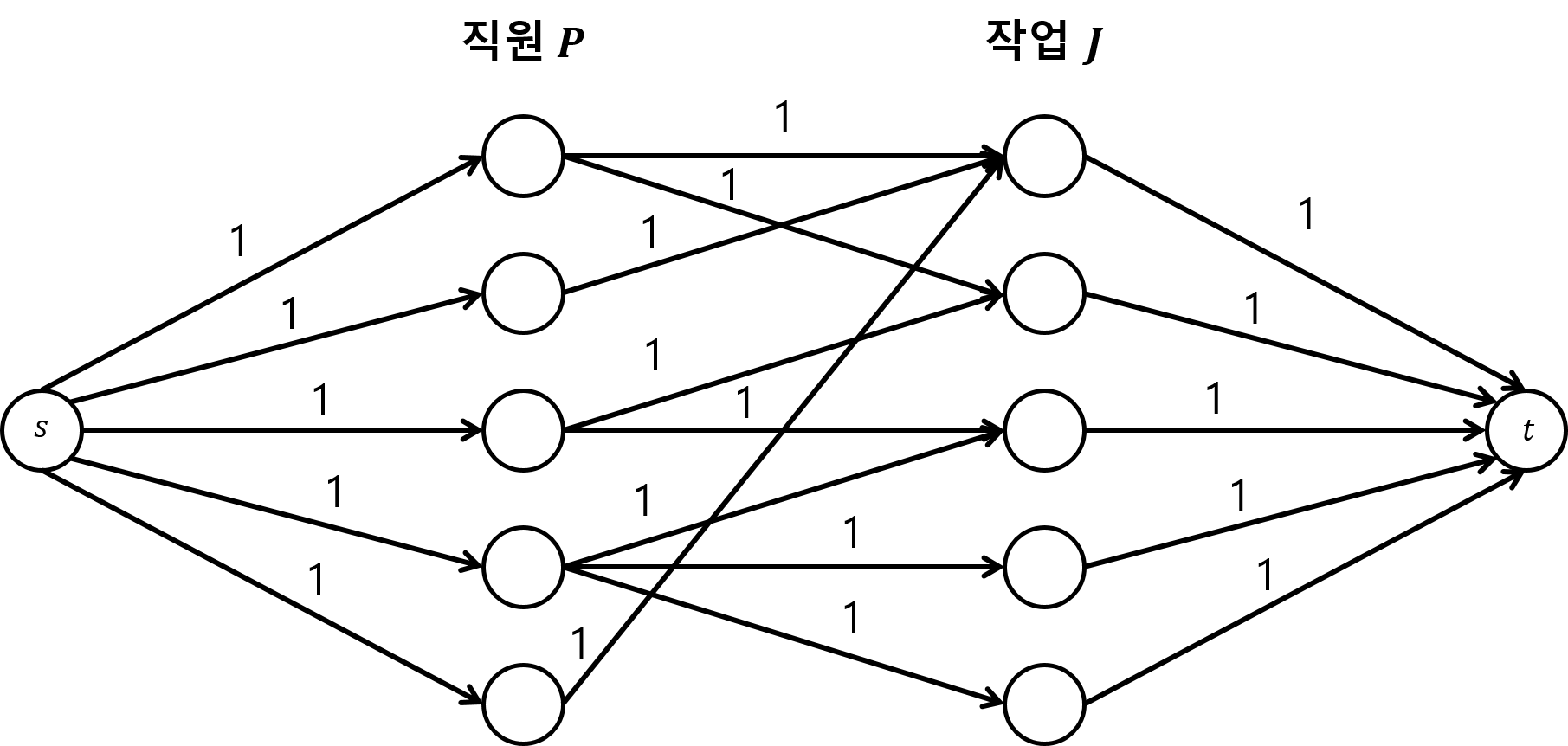Bipartite Matching
2020-1학기, 대학에서 ‘알고리즘’ 수업을 듣고 공부한 바를 정리한 글입니다. 지적은 언제나 환영입니다 :) 전체 포스트는 Algorithm 포스트에서 확인하실 수 있습니다.
이번 포스트는 Network Flow 포스트의 후속 포스트입니다. Network Flow 문제의 핵심이 되는 정리인 <Max-Flow Min-Cut Theorem>에 대해 궁금하다면 이전 포스트를 참고해주세요! 😉
이번 포스트의 코드는 백준 1298번: 열혈강호 문제를 기준으로 작성되었습니다 👨💻
Introduction to Bipartite Matching
<Bipartite Matching; 이분 매칭>은 직원의 집합 $P$와 작업의 집합 $J$, 그리고 각 직원들의 작업에 대한 선호가 주어졌을 때 (직원, 작업)의 매칭의 수를 최대한으로 만드는 조합을 도출하는 문제이다.

이때, 매칭을 생성할 때는 각 사람은 최대 하나의 작업에 할당될 수 있고, 하나의 작업은 최대 한 사람에게만 할당 받을 수 있다. 대충 한 사람이 2가지 일을 못하고, 한 작업에 2명이 못 들어간다는 말
(직원, 작업)의 매칭을 진행하다가 더 이상 매칭을 진행할 수 없는 상태를 maximal matching이라고 하며, 당연하게도 모든 maximal matching이 maximum matching을 보장하는 것은 아니다!
Reduction to NF Problem
우리는 <Bipartitie Matching> 문제를 아래와 같이 <reduction; 환원>시켜 해결할 수 있다.

Reduction to NF
- Replace each edge to a directed edge from a person to a job of capacity 1.
- Add a special node $s$ and connect $s$ to every node in People by directed edge of capacity 1.
- Add a special node $t$ and connect every node in Jobs to $t$ by directed edge of capacity 1.
위와 같이 <Bipartite Matching>을 <Network Flow> 문제로 환원하면, 우리는 reduction 위에서의 maximum flow가 아래의 결과를 뱉을 것이라고 기대할 수 있다.
그리고 reduction된 NF 문제에서 얻는 maximum total flow가 maximum matching을 유도한다는 것을 간단하게 증명해보자!
Let $M$ be the set of edges used in the maximum flow of value $k$. Then $M$ is a matching because there is at most on edge in $M$ leaving a one person and entering a one job. (바로 위에서 언급한 성질 때문!) Moreover, $M$ consists of $k$ matching edges!
(귀류법) If there is a matching consisting of more than $k$ matching edges, then there must be a flow of value larger than $k$. That is a contraction!
구현
사실 구현은 앞선 포스트에서 살펴본 <Ford-Fulkerson Algorithm>으로 reduction을 잘 구현하면 된다. 별로 어렵지 않다 ㅎㅎ
👉 Ford-Fulkerson & Edmons-Karp Algorithm
